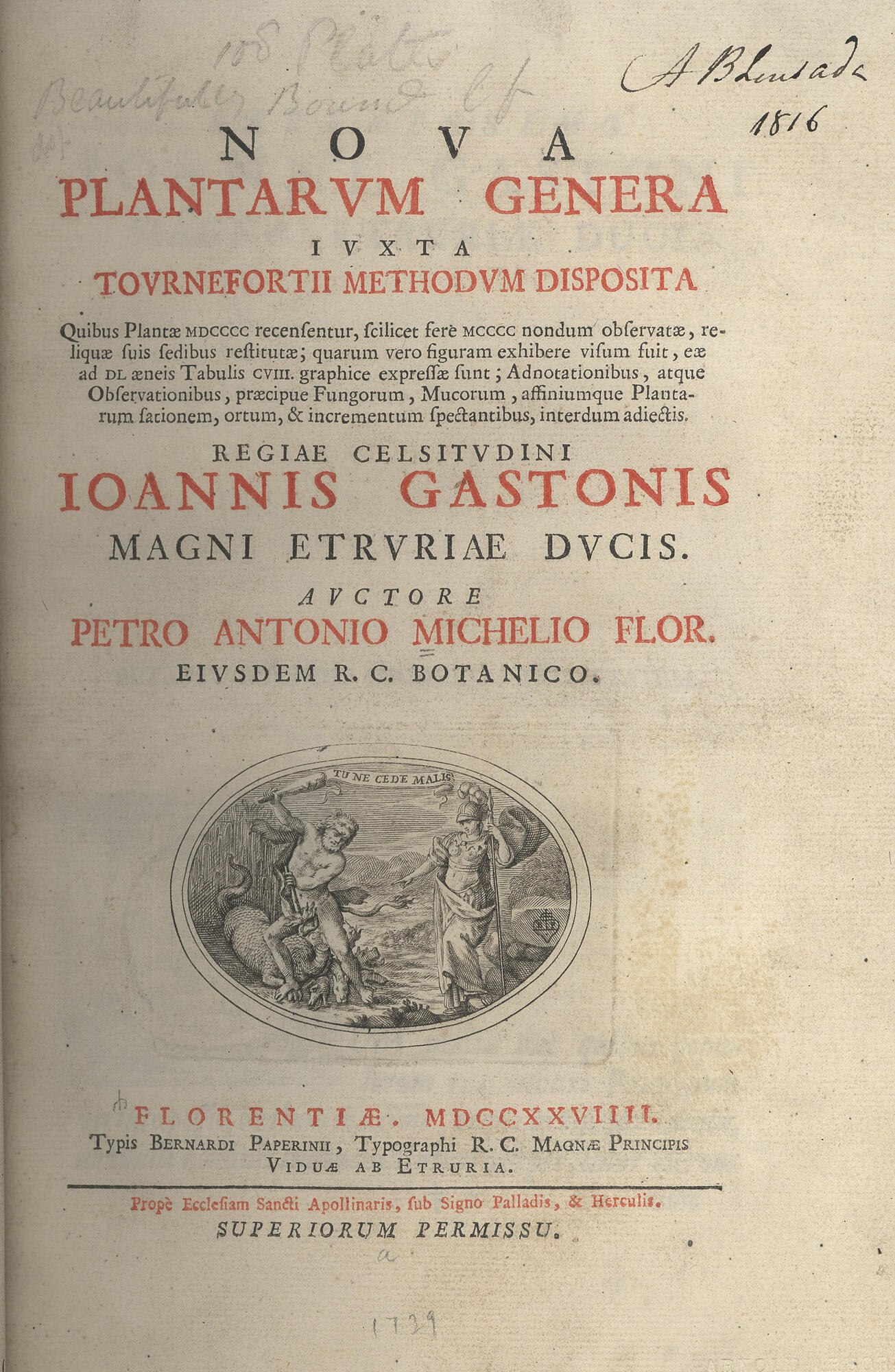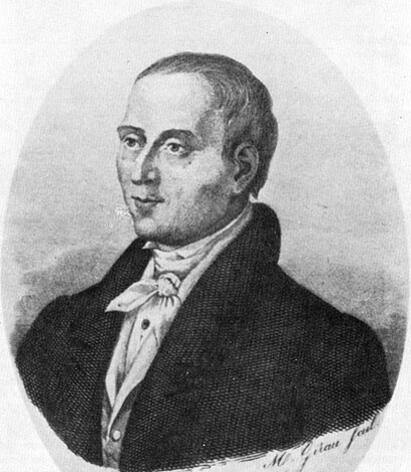Noua plantarum genera (1729)


1729
Micheli was the first to point out that fungi definitely have reproductive bodies or spores.
Many believe this book marks the birth of mycology.
Table 86 Peziza and Helvella [copperplate engraving]
Micheli, Pier Antonio, 1679-1737.
Noua plantarum genera : iuxta Tournefortii methodum disposita quibus plantæ...
[Florentić. : Typis Bernardi Paperinii ..., MDCCXXVIIII 1729.]
Image Courtesy of the Farlow Library of Cryptogamic Botany
 Pier Antonio Micheli (1679-1737) was born in Florence in 1679. As a young man he taught himself Latin and began to study plants. He was appointed botanist to Cosmo III, Duke of Tuscany, in 1706 and with this position came the responsibility of the public gardens of Florence. This position allowed him to continue his botanical studies. Micheli served also as a professor at the University of Pisa.
Pier Antonio Micheli (1679-1737) was born in Florence in 1679. As a young man he taught himself Latin and began to study plants. He was appointed botanist to Cosmo III, Duke of Tuscany, in 1706 and with this position came the responsibility of the public gardens of Florence. This position allowed him to continue his botanical studies. Micheli served also as a professor at the University of Pisa.
Micheli's Nova plantarum generum of 1729 revolutionized the study of fungus. In this work he included information on "the planting, origin and growth of fungi, mucors, and allied plants". He described 1900 plants, 1400 for the first time. Among these were 900 fungi and lichens, represented in no less than 73 plates. Micheli was also the first to observe spores in all groups of fungi, to describe asci, and to culture fungi from spores.
Micheli made a number of collecting trips around Europe and, on one such trip to Italy in 1736, he contracted pleurisy and died in Florence soon after.